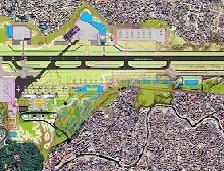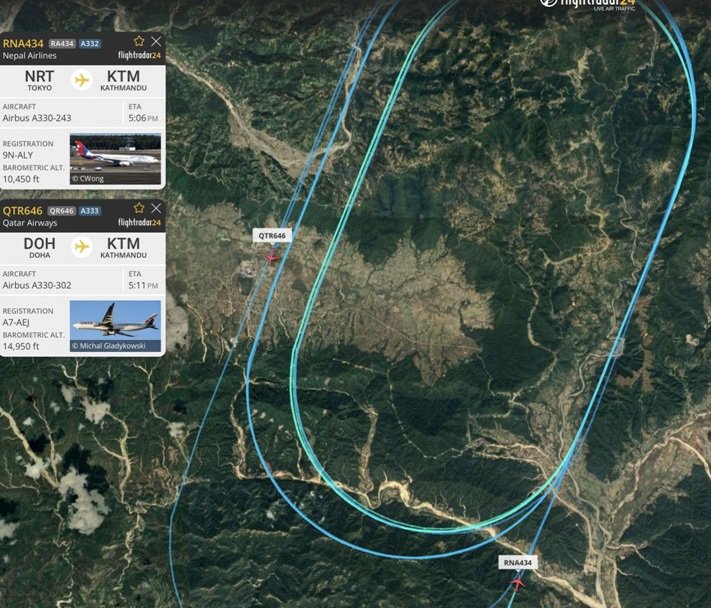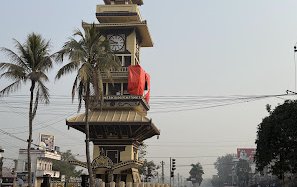
The prevailing state of affairs in the country has set an environment of public apathy in all spheres. Nothing gets done in government offices; if it gets done, it is only half done, and that too at a “super” lethargic pace. It is no different, or perhaps worse, in the case of the aviation sector here. Airlines and agencies that oversee their overall safety aspects are always expected to be at the top of their performance levels. The global competitive benchmark and its interlinked character demand this from every country, without exception. But what of our agencies are supposed to be at the forefront in this respect? Talking of business, of the two narrow bodies in Nepal Airlines' "fleet," 9N-AKX has remained grounded for 109 days at the time of writing. No wonder RA has been forced to cut back on its scheduled flights given the shortage. We all know that RA is in a deeper financial mess and is bleeding tons by not getting the aircraft flying soon. .Why is RA kept in this pathetic state and not fly likes an airlines ? If the government does not wish too make any changes in the way it is made to operate,what is the purpose of its perpetual deceitfulness all along?
While at the other end, the Civil Aviation Authority of Nepal (CAAN), the guardian of aviation safety, is comfortable wallowing, for over a decade now, in the EASA’s safety concern list, popularly termed the “black list’. It seems they are in no hurry, as RA is incapable of flying to Europe with its current outfit as it is. It will, thus, make no difference whether we are in or out of it. A very comfortable, god send position to be in, with accumulated tons of money generated by much abused and maligned TIA and the showbiz continues unhindered.
But both are often seen making long press releases to counter critical reporting in the media. There was a rather long 12-point rebuttal issued by the TIA/CAAN office recently, while RA also keeps doing so regularly. There is no denying that most news reports tend to be superficial and bent on sensationalizing rather than bringing out solid facts and analysis. As for one report about mismanagement at the TIA, the story blamed an individual for all airport ills, ranging from gold smuggling to fights between officials on duty. It is claimed that there are 25+ governmental organizations and an additional 170 agencies that are involved directly or indirectly in the running of TIA. The cited examples are mere tips of the iceberg; such happenings would not be possible without the top of both political and bureaucratic establishments working “hand in glove." An inherent habit that will perhaps never change.
But the single-line rebuttal (point 8/11 Mar) claimed that the holding of aircraft in the air has decreased, save for a few occasions. But the reality is that a small, unfavorable tailwind can push TIA’s operation haywire, with wide bodies making prolonged holds. Ironically, this happened just two days after the above press release. While there may be serious management and logistics-related issues at TIA, its primary function is to smoothly handle all flight arrivals and departures with “resources in hand.” More so, TIA offers a satellite-based or more reliable Required Navigation Performance—Approval Required” (RNP-AR), in short, for landings at both ends. RNP-AR for runway '20' was designed only in 2021, much after that for runway 02.
RNP-AR’s navigation specification is space-based navigation, and space-based instrument flight procedure designs allow even narrower flight paths to be flown in the lateral dimension. aircraft and crew must be qualified or certified to use the published procedure. The accuracy of the "Performance" guarantees that the on-board FMS (Flight Management System) will monitor the lateral navigation accuracy and alert the pilot when that accuracy is not being met so that corrective measures can be taken. With all this in place, it is surprising that even then, the said procedure for runway 20 has no takers this far.
There are a couple of things that we need to understand here. First, air traffic controllers (ATCs) always “instruct”; they do not give “orders” as thought. The pilot in command is “the final authority as to and solely responsible for” the safe completion of the flight, and there are no consequences whatsoever for refusing an instruction. Second, airlines can have different minimum standards, one that sets a higher benchmark than that issued by the aviation authorities of the country. For example, the minimum visibility requirement for an airport operation may be, say, 2000m, but some may not land until it is 3000m. From that standpoint, airlines that frequent TIA may also have issued such guidelines against using runway 20 for landing, as no one, so far, has applied for permission to do so,not even our own RA.

Qatari A330 held on March 13 due to an unfavorable tailwind
But at the other end, agencies like CAAN have to be one step ahead in making use of the available resources. This is especially true and critical for a single-runway airport like TIA. While it may be overtly wrong to coerce airlines to use runway 20, it will be well within CAAN’s right to ask airlines to have at least one cockpit crew to be “RWY20/RNP-AR certified” when they fly in. Naturally, airlines detest diverting and like holding in the air for uncertain durations. But it will be within TIA’s prerogative to ask the airline to land on runway 20, tailwind or no tailwind, as it sees fit because of the traffic situation. If airlines still do not wish or do not have certified crew to make the approach as instructed, they could be curtly told to head to the nearby alternate airport and wait until the situation becomes more favorable to them. Surely, this much can be done.
Arjyal can be reached at harjyal@yahoo.com
- One Trick Ponies
- Jun 10, 2025
- A Gateway Called Wakhan
- May 02, 2025
- No Wonder, Its Mad March
- Mar 12, 2025
- The Pinhole Image
- Feb 04, 2025
- Not Just Deadline Overrun
- Aug 31, 2024
















